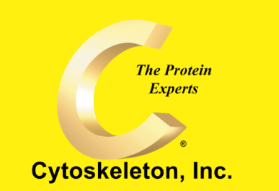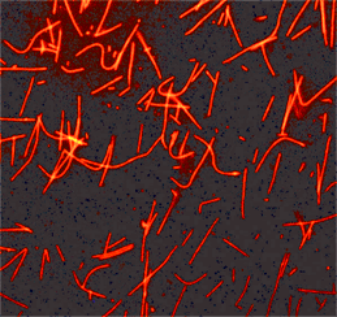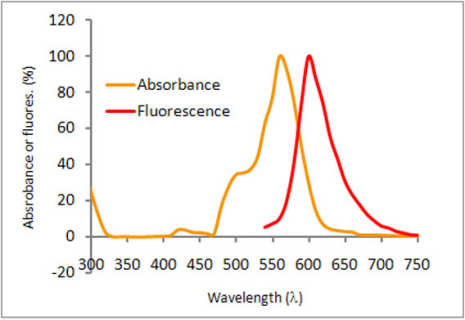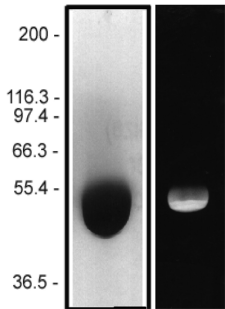當(dāng)前位置: 首頁(yè) - 產(chǎn)品專區(qū) - 熱銷產(chǎn)品

Tubulin (Rhodamine labeled; porcine, micro-injctn)
| 貨號(hào) | TL590M-A | 售價(jià)(元) | 5271 |
| 規(guī)格 | 5 x 20 μg | CAS號(hào) |
- 產(chǎn)品簡(jiǎn)介
- 相關(guān)產(chǎn)品
Rhodamine labeled microtubules formed from rhodamine labeled tubulin.


Product Uses Include:
Laser based applications
Monitoring microtubule dynamcs in living cells
Speckle microscopy
Formation of fluorescent microtubules
Microscopy studies of MAP and microtubule associated motor activities
Nanotechnology
Material:
Porcine brain tubulin (>99% pure, see Cat. # T240) has been modified to contain covalently linked rhodamine at random surface lysines. An activated ester of rhodamine was used to label the protein. Labeling stoichiometry was determined by spectroscopic measurement of protein and dye concentrations (dye extinction coefficient when protein bound is 64,000M-1cm-1). Final labeling stoichiometry is 1-2 dyes per tubulin heterodimer. rhodamine labeled tubulin can be detected using a filter set of 530-550 nm excitation and 580-600 emission. Rhodamine tubulin is in a versatile, stable and easily shipped format. It is ready for micro-injection or in vitro polymerization. Cytoskeleton, Inc. also offers AMCA (Cat. # TL440M), HiLyte Fluor? 488 (Cat. # TL488M), X-rhodamine (Cat. # TL620M) and HiLyte Fluor? 647TM (Cat. # TL670M) labeled tubulins of the same quality.
Purity:
The protein purity of the tubulin used for labeling is determined by scanning densitometry of Coomassie Blue stained protein on a 4-20% polyacrylamide gel. The protein used for TL590M is >99% pure tubulin (Figure 1 A). Labeled protein is run on an SDS gel and photographed under UV light. Any unincorporated rhodamine dye would be visible in the dye front. No fluorescence is detected in the dye front, indicating that no free dye is present in the final product (Figure 1 B).

Figure 1: Rhodamine tubulin protein purity determination. A 50 μg sample of unlabeled tubulin protein was separated by electrophoresis in a 4-20% SDS-PAGE system and stained with Coomassie Blue (A). Protein quantitation was performed using the Precision Red Protein Assay Reagent (Cat. # ADV02). 20 μg of the same protein sample was run in a 4-20% SDS-PAGE system and photographed directly under UV illumination (B).
Biological Activity:
The biological activity of rhodamine tubulin is assessed by a tubulin polymerization assay. To pass quality control, a 5 mg/ml solution of rhodamine labeled tubulin in G-PEM plus 5% glycerol must polymerize to >85%. This is comparable to unlabeled tubulin under identical conditions.


